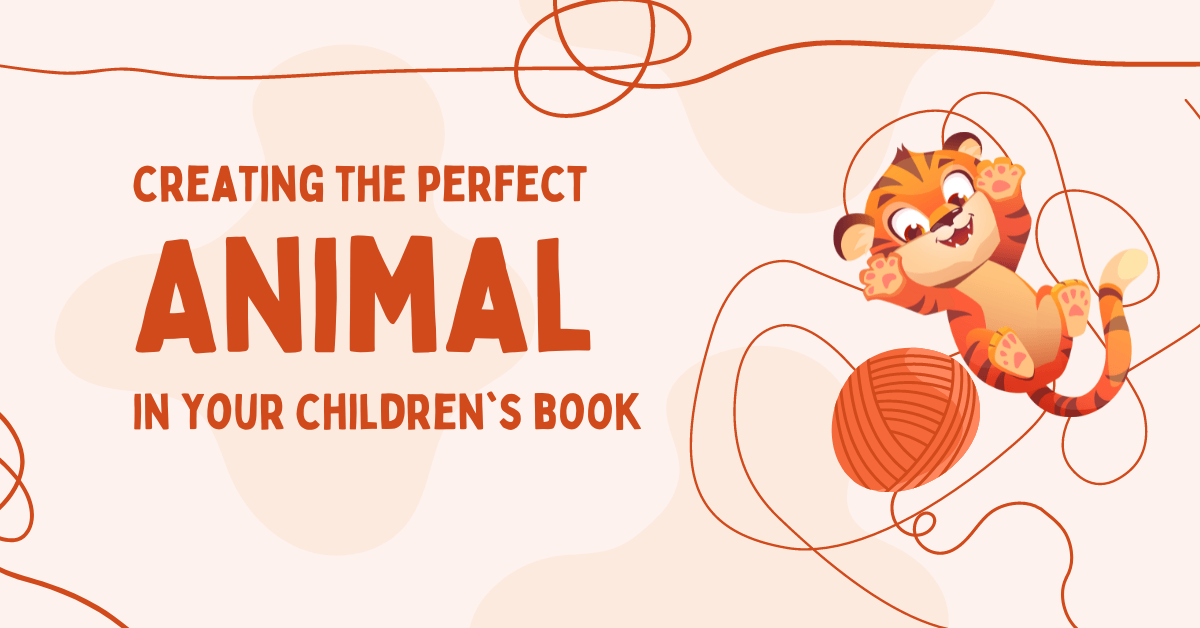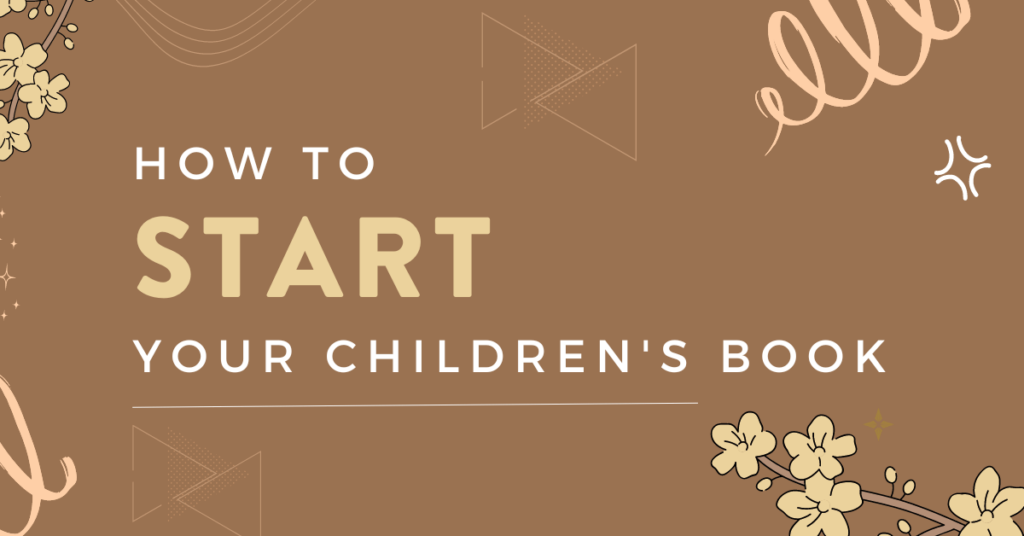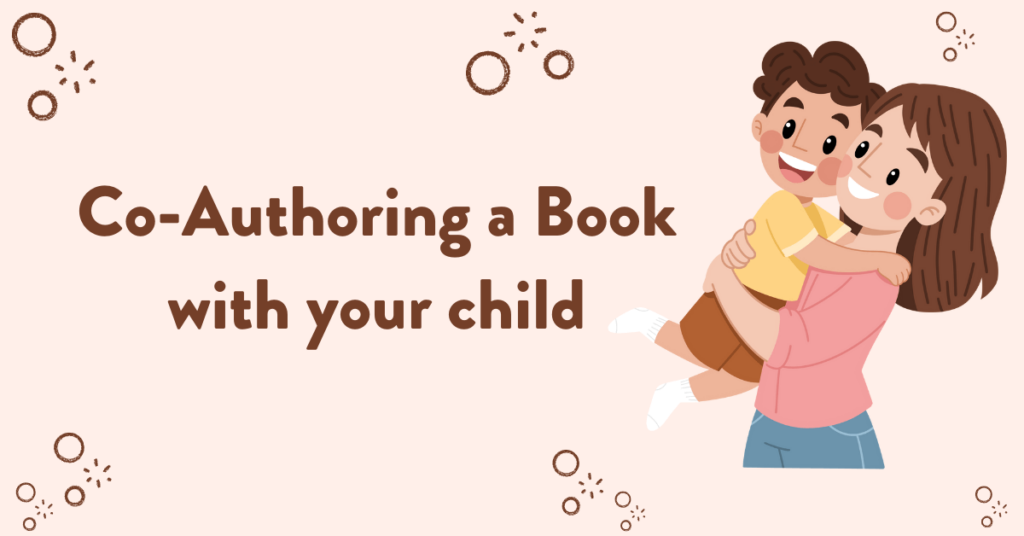
When you think back to some of the most enchanting children’s picture books, what comes to mind? I’ll bet it’s the whimsical animals that prance and dance through the pages, capturing the hearts of young readers.
Animals as protagonists? It’s pure genius, and it’s about time someone spilled the beans on how to nail it down.
This article is great, obviously, but you can also read my general overview of how to write a children’s book.
1. Why You Should Use Animals
Animals have always had a special place in the world of children’s literature. From the playful kittens in “The Aristocats” to the wisdom-spouting spider in “Charlotte’s Web,” animals are a staple in stories aimed at young readers.
But why does this work so beautifully? Here’s why so many children’s books use animals as characters:
1. Instant Engagement: Animals naturally fascinate children. They’re curious about different species, their sounds, their looks, and their behaviors. By incorporating animals into stories, you immediately capture young readers’ attention.
2. Easier Exploration of Difficult Themes: Animals can represent difficult emotions in a way that softens the blow for the child readers. If you wrote them as humans, the book would feel too harsh.
3. Relatable Emotions: Animal characters can express human emotions in a way that’s both accessible and less intimidating for children. They can see themselves in these characters without the direct comparison to other human beings.
4. Educational Opportunities: Teaching children about various animals, their habitats, and characteristics can be both fun and educational. You’re not just telling a story; you’re opening up a world of learning.
5. Creative License: Want a rabbit that flies or a fish that sings opera? With animals, the sky’s the limit! Children’s books allow for wild creativity with animal characters, and that imaginative freedom can lead to delightful surprises.
2. Choosing the Right Animal
The first question you should ask is, “What kind of animal fits my story?” Here’s where some serious thinking comes in.
And guess what? Sharks aren’t just for scary stories, and rabbits aren’t confined to Easter tales. Break the mold. Think outside the zoo!
- Align with the Theme: If your story is about friendship, consider animals that are known to form strong bonds. A pair of dolphins? Perfect! A turtle might symbolize persistence and determination. Think of “The Ugly Duckling” where the choice of a swan carries deep thematic weight because of its association with beauty.
- Express Personality: A sly fox, a wise owl, a brave lion – animals come with built-in characteristics that can be leveraged to add depth to your story.
- Consider Your Own Connection: Sometimes, the best choice is an animal that you personally love or feel a connection with. Your passion can translate into a more engaging character. If you raise chickens, then make your character a chicken or rooster!
If you’re grappling with this and feel like you need some guidance, consider signing up for Two Weeks to Your Best Children’s Book. This course can help you get those creative juices flowing.
3. Bringing Your Animal to Life
You’ve picked the perfect creature. Now what? Now you shape it, mold it, and make it come alive.
Honestly, characterization works the same way whether you’re writing a human or an animal, but there are a few tricks for animals that I’d like to show you.
- Create a Distinct Voice: Your animal character needs a voice that resonates. It’s got to be consistent and reflective of its personality. Are you going to have your owl speaking in a southern drawl, or your snake talk with a lisp?
- Play Against type: Sometimes it’s fun to pick a characteristic that seems completely opposite of the animal. For instance, a shy lion or a domineering mouse. Kids will get a kick out of the contrast between the reputation of the animal and how you portray them in the story.
- Dive into Research: Don’t hesitate to learn more about the animal. It’s fun to drop some facts into the story, like how sharks sleep, or just have the animal do a surprising thing. Real characteristics and behaviors can add depth to your character, even in a fantastical tale.
- Experiment with Illustrations: It’s fun to develop personality with the illustrations of your animal. For instance, a hoity-toity skunk with a bow-tie, or a giraffe wearing a tight orange jumpsuit.
4. How Human Is Your Animal?
There’s a wide spectrum on how similar your animal should be to a human. I’ve edited a lot of books where the animals are really animalistic, and a lot where they’re basically humans with fur and a tail.
There’s no right answer for your book, but here are some considerations:
1. Animals Who Speak vs. Animals Who Don’t
- Animals Who Speak: Giving animals human-like speech can create engaging characters that children relate to. Think of the clever dialogue in “Winnie the Pooh.” This approach often works well in fantastical or allegorical tales, where animals serve as proxies for human characters.
- Animals Who Don’t Speak: Usually, animals can speak to each other, but sometimes they can’t speak to humans (or humans can’t understand them). Figure out whether it’s necessary to have animal/human discussions, or whether you just want to keep everything to the realm of animals.
2. Animals Acting Like Animals/Humans
- Animals Who Act Like Animals: These characters retain their natural behaviors. Beavers build dams; cats groom themselves. This approach can create a connection to nature and teach children about the animal kingdom.
- Animals Who Act Like Humans: On the flip side, animals might dress in clothing, drive cars, or have jobs. This anthropomorphism can create whimsical and fantastical worlds, allowing for humor, satire, or deeper exploration of human themes.
The choice here often boils down to the story’s purpose and the desired connection with the readers.
3. Human Substitutes or Pure Animals?
- Animals as Substitutes for Humans: Here, animals are clearly standing in for people, often to explore human emotions, society, or morals. These characters can allow children to engage with complex themes in an approachable way. In these types of books, animals will wear suits and drive cars.
- Animals Representing Animals: Conversely, animals may be depicted as wild or domestic creatures without human traits. They symbolize themselves, and the story may aim to educate, celebrate nature, or explore animal life from a more biological perspective.
This decision often hinges on the underlying goal of the story. Is it to entertain, educate, or provoke thought?
Consider whether this is a world without humans? If so, then you’re probably just substituting animals for humans.
5. Animals as Minor Characters
Most of this article is about when animals are the stars of your book. But what about when the book is about a human who has an animal pet?
I work with plenty of authors that want to immortalize their delightful pet in a children’s book story, and I cheer them on and coach them with great advice.
Here are my tips when the animal in your story plays a secondary role:
- Make sure your pet has a crucial role to play. For instance, at the climactic moment, the dog/cat will take action to help us get to a happy ending.
- Serve as sounding board. The pet should give the human character someone to talk to, so there can be dialogue back and forth. The pet exists to help us get to know the main character better.
- Develop the pet’s personality. Even if the pet isn’t the point of view (POV) character, or even the protagonist, you still need to help the reader understand the pet’s personality.
6. Advanced Advice
Okay, so you’ve chosen your animal, you’ve researched them, you’ve brought them to life, and you’ve figured out how human they are.
Now it’s time for the next step: how do you write animals in a children’s book? These are some advanced tips:
Certainly! Including animal characters in a children’s picture book is a delightful yet challenging task. It goes beyond merely choosing an animal and attributing human traits to it. Here are some advanced tips that can help authors delve deeper into crafting memorable and impactful animal characters:
- Choose a Sidekick. Why have one animal when you can have two? It’s often a good idea to choose a sidekick character who is a different type of animal. A bear’s sidekick could be an eagle. A spider’s sidekick could be a worm. The contrast between the two characters gives lots of possibilities for humor and conflict.
- Play with Perspective: Sometimes, showing the world from the animal’s point of view can create a unique and engaging experience. Consider the physical perspective (height, senses, environment) of the animal and translate that into the narrative. For instance, a giraffe could see over a hedge and help the other shorter animals. “Stellaluna” by Janell Cannon explores the world through a bat’s viewpoint, from hanging upside down to navigating at night.
- Utilize Cultural References: If applicable, weave in cultural symbolism or folklore related to the animal. This can resonate with specific audiences and add educational value.
- Sensitivity to Animal Traits: When humanizing, ensure that the traits align with the animal’s nature. Paddington Bear’s politeness and love for marmalade align with popular perceptions of British culture, connecting the bear’s character to his London home.
- Consistency in Anthropomorphism: If your animal character behaves like a human, maintain consistency in how this is depicted. Mixed signals can confuse young readers, so set clear rules for your world.
- Collaborate with Experts: Sometimes, working with an illustrator who specializes in animals or consulting with a biologist can bring authenticity and innovation to your character portrayal.
- Interactive Elements: Consider integrating interactive elements that invite readers to engage with the animal character. This could be through questions, activities, or visual prompts related to the animal’s behavior or habitat.
- Consider Professional Editing: If you’re aiming for perfection, hiring a children’s book editor like myself can provide detailed feedback tailored to your story, ensuring that the animal characters truly shine.
7. FAQ: Animal Characters
Q: Are there any animals you shouldn’t use?
A: Not really. If you have a super familiar animal, like dogs and cats, then kids have an instant emotional connection with them. If you have an exotic animal, like a hippo or a giraffe, kids love the novelty. And if you have a weird or rare animal like a platypus, then it’s educational as they learn about the animal.
Q: Can I write a children’s book with animal characters that’s aimed at adults as well?
A: Yes, dual-audience books are becoming increasingly popular. Think about layers of meaning or humor that appeal to adults while still engaging children. In fact, I just edited a children’s book for a corporation that was meant to explain a specific technology to adults in the IT sector.
Q: Is it necessary to use real animals, or can I invent my own species?
A: You’re free to invent your own species! This can add an element of fantasy and creativity, providing endless possibilities for character development and world-building. I would love to see what a Rhinosnake looks like!
Q: Can I mix different types of animals in one story?
A: Absolutely! Mixing different animals can lead to exciting dynamics and relationships. Just think about “The Jungle Book” and the unique interactions between wolves, a bear, a panther, and a human child.
Q: Can I base my animal character on a beloved pet or a real animal?
A: Absolutely! Drawing inspiration from real-life animals can add authenticity and emotional connection to your character. Honestly, this is one of the most popular ways to include animals in children’s books.
Q: Are there any courses to help me write animal characters?
A: Yes! Investing in specialized guidance like Two Weeks to Your Best Children’s Book can provide tailored insights and techniques to craft compelling animal characters.
Q: How do I handle the death of an animal character in a children’s book?
A: The death of a character, even an animal, can be a profound and sensitive topic. Handle it with care, keeping in mind the age group and the overall message you want to convey. Even though it’s an animal, the death probably needs to happen off-page, rather than visually depicting it, and it shouldn’t be a violent death.
Q: How can I incorporate animal sounds effectively in the text?
A: Animal sounds can be used to add atmosphere, depict character traits, or even as a repetitive motif for younger readers. Be mindful of the language and rhythm to maintain the story’s flow.
Q: Can animal characters be used to represent different cultures or traditions?
A: Yes, many authors have used animal characters to explore cultural themes, folklore, or traditions. Just ensure that the representation is respectful and well-researched.
Q: Can I use endangered or exotic animals?
A: Yes, you can. In fact, this can be an opportunity to educate children about these species. Just be sure to handle them with sensitivity and awareness of conservation issues.



